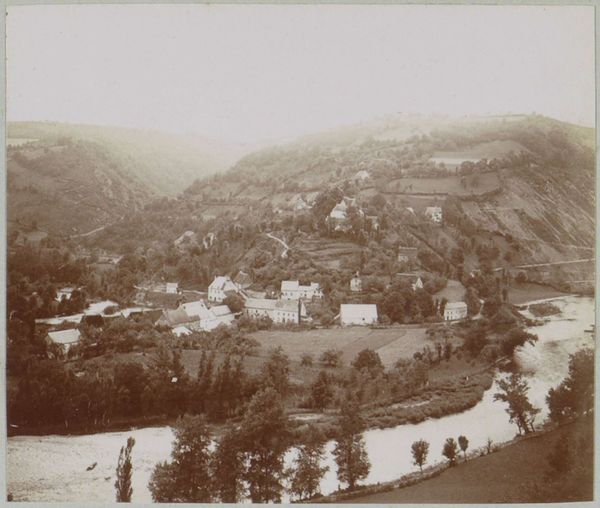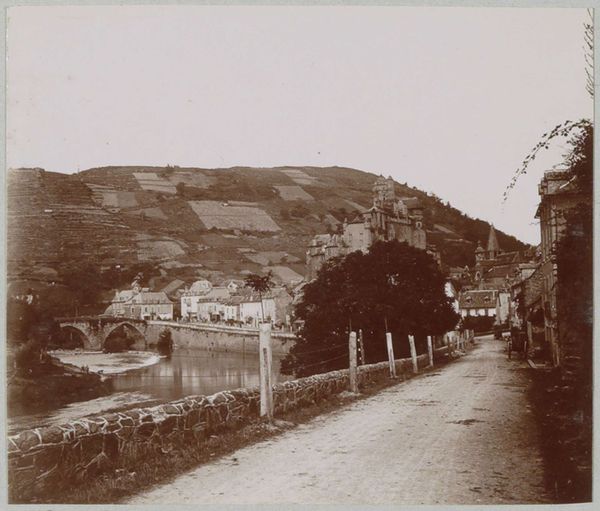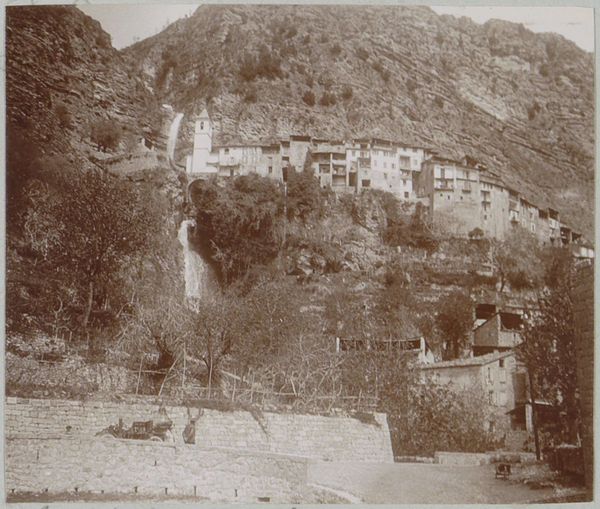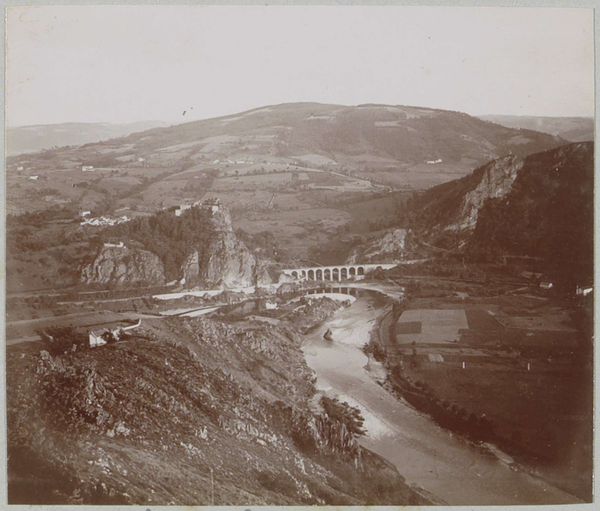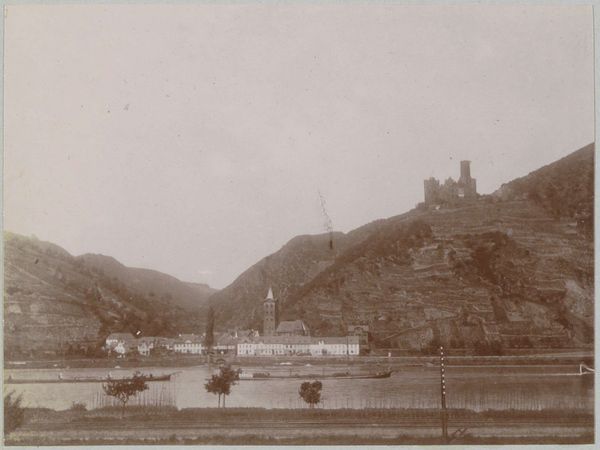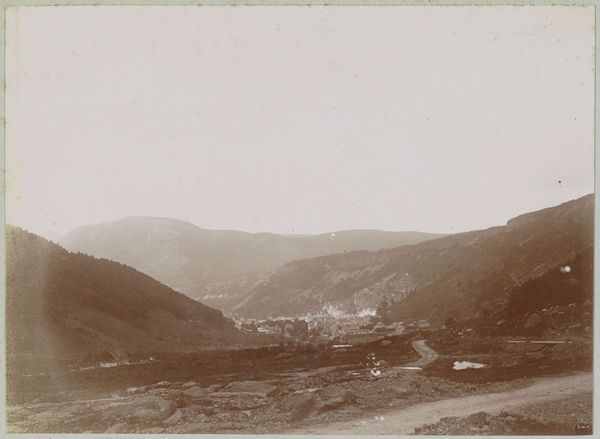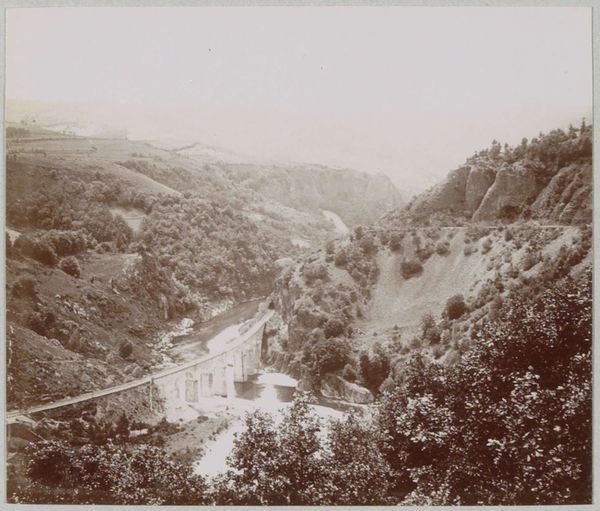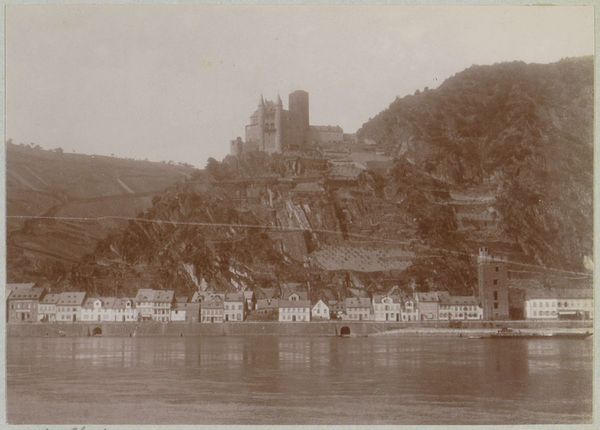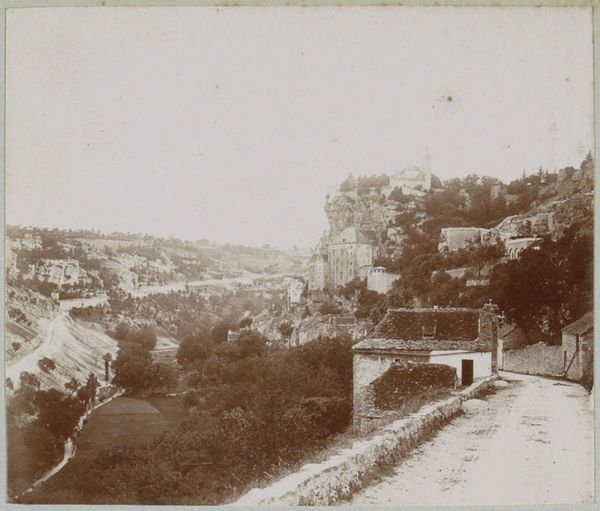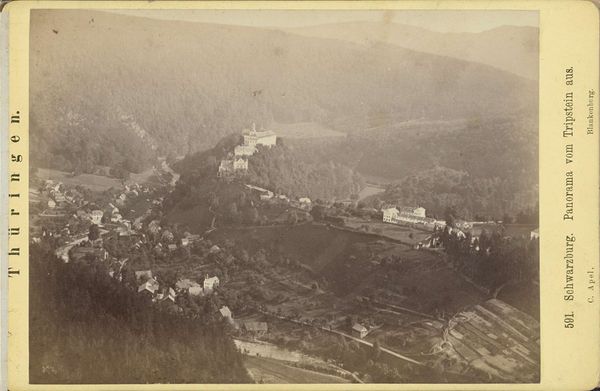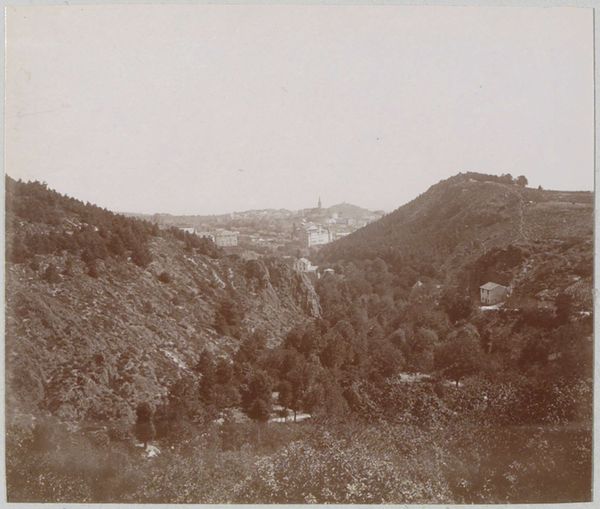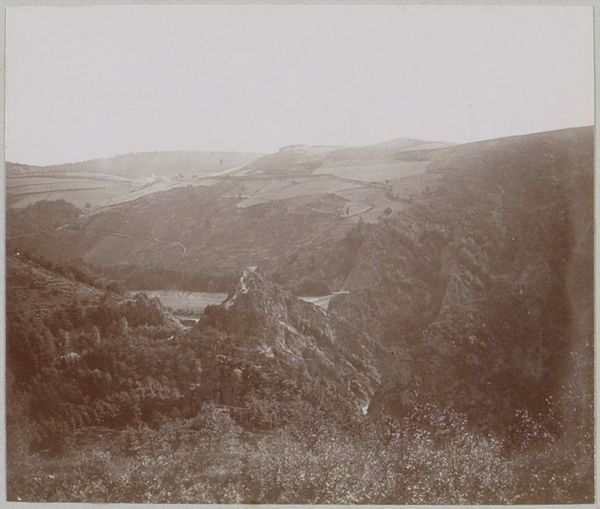
Gezicht op de Rijnvallei met rechts Burcht Rheinfels bij Sankt Goar 1900 - 1906
0:00
0:00
Dimensions: height 78 mm, width 105 mm
Copyright: Rijks Museum: Open Domain
Editor: So, this photograph, "View of the Rhine Valley with Rheinfels Castle near Sankt Goar on the Right," taken between 1900 and 1906, shows a faded but beautiful scene. The detail in the castle ruins is remarkable, but I can't help feeling a bit melancholic looking at it. What's your interpretation of this work? Curator: It’s a fascinating piece of Pictorialist photography, and the melancholy you feel is deliberate. Consider the context: by the late 19th and early 20th century, photography was grappling for recognition as ‘art’. Pictorialism, with its soft focus and painterly effects, aimed to elevate photography by mimicking established artistic genres, particularly Romantic landscape painting. The ruined castle, a quintessential Romantic trope, speaks of history, decay, and the sublime power of nature, reflecting a societal fascination with ruins and the past. How do you think that affected photography’s social role? Editor: I guess by linking to these romantic ideas it helped photography get taken more seriously in the art world and museums. So, the political context really shaped what photography wanted to be? Curator: Exactly! The desire for acceptance within the established art world—dominated by painting and sculpture—significantly influenced the style and subject matter of early art photography. And in that light, this choice of composition is particularly interesting. It creates a certain sense of national romanticism around specific sceneries and historical narratives. How else could it be relevant to contemporary imagery? Editor: Well, looking at it from today's context makes me question who decides what gets framed and remembered in art, or what stories these historical landscapes represent to diverse groups of people today. Curator: Precisely. It encourages a critical reflection on how photographic traditions were shaped and what cultural values they reinforce, and challenges us to rethink whose stories are being told. Editor: That gives me a lot to think about when considering how this photograph relates to contemporary discussions about art and cultural identity. Thanks!
Comments
No comments
Be the first to comment and join the conversation on the ultimate creative platform.
